- Home
- Philip Pullman
Daemon Voices Page 25
Daemon Voices Read online
Page 25
But there can be no ambiguity in the folk tale. The real queen in the passage I read just now from “Little Brother and Little Sister” is as dead as a doornail; we even know where her body is hidden. She’s a ghost if ever there was one. Clarity is everything.
That has the corollary that the events of the folk tale, which are shown to us with such brilliant and uninflected clarity, must be interesting in themselves if the story is to work. They must be dramatic, violent, exterior and visible. Consider trying to tell Emma as a folk tale:
Once there was a rich man who had a beautiful daughter…
I think you’d get that far and then you’d have to stop and scratch your head. To try and tell the story of Emma, or of Vanity Fair, or of Tom’s Midnight Garden, as a folk tale would be to create a kind of monster; the novel is a complex thing, and many of its events, compared with the ferocious melodrama of the folk tale, are interior and invisible.
The ferocious melodrama of the events of the folk tale, I should emphasise, because in the voice of the Brothers Grimm’s best stories, or for that matter some of those assembled by Katharine Briggs or Italo Calvino or Aleksandr Afanasyev, or for the matter of that in ballads such as “Sir Patrick Spens,” a great folk tale can have something of the same quality I attributed to Philippa Pearce’s style earlier on: a “classical” quality, characterised by clarity and steadiness and coolness of tone.
But Tom’s Midnight Garden isn’t a folk tale, or anything like one; once again, the way it’s told is the best way it could be told.
* * *
—
I WANT TO FINISH MY BRIEF LOOK AT DIFFERENT ASPECTS OF THIS mysterious thing, the narrator, by looking in a little more detail at some aspects of the narrator’s activity in the book itself.
The first thing we encounter, of course, is the opening, and anyone who’s tried to write a story knows that the right opening is a very hard thing to get right. Where—at which point in the characters’ lives—do you start? Consider the points in the stream of time where the story might just as well have begun. It could have opened with Tom and Peter planning to make their tree house, their project that’s later frustrated. Or with the first symptoms of the measles that will separate the brothers for the summer. Or with Alan Kitson and Tom arriving at the Kitsons’ flat in the big house crowded round with newer, smaller houses, the house with no visible garden, where Tom’s adventure will take place. Or with Tom’s mother writing to the Kitsons asking if they can take Tom in till Peter is better. All perfectly reasonable choices. So is the one we do have: the story opens with Tom about to leave in the car with Uncle Alan, and feeling bitter and resentful about having to do so. Why is that better than the others? Or is it? Might it have been better to go way back to Hatty, and have the story open with the little Victorian girl looking wide-eyed at the pyjama-clad boy whom nobody else sees?
Well, I think it would have been wrong to begin with Hatty, if only because this is Tom’s story and not hers, and the character we see first is the one to whom we feel the story belongs, in some way. One of the characteristics of the classical style is that it’s not afraid of the obvious, and it never tries to be original. This is a story about Tom and his adventure: why begin with anyone else? As for when, this moment is pivotal. We can see both Tom’s background, where he comes from, the past, the people he’s leaving behind, especially the brother he’ll miss so much, and the car and the driver who are going to carry him into the future. In T. S. Eliot’s words I quoted at the beginning,
Time present and time past
Are both perhaps present in time future—
—the future time when we shall be reading the story.
The opening of a book only occurs once, but that doesn’t mean the problems are over when you’ve found the best opening. Every sentence that comes afterwards has to be thought over, an appropriate position and stance established for the narrator. How close to the characters is the narrator going to stand? Close enough to see them in detail, at least. A book that begins “All happy families are alike; every unhappy family is unhappy in its own way” had better quite quickly find a particular family to focus on, or the reader in search of a novel will take it for a work of sociology. A novel needs to look closely at people.
I’ll finish with three examples of the narrator’s looking closely, and of her perfect tact in doing so, by which I mean finding precisely the best spot to look from and the best moment to do it.
The first is where Tom is questioning Uncle Alan about Time. Uncle Alan, as the narrator never says but as we can see with perfect clarity, is an overbearing know-all who enjoys the domination he’s established over his wife and which he’d like to establish over Tom.
“What is Time like, Uncle Alan?” asked Tom.
His uncle put his book down altogether; and his aunt nervously put down her mending, too.
“Tom,” she said, “you shouldn’t always be asking such very odd questions of your uncle. He’s tired after his day’s work.”
“No, no, Gwen. A child’s questions should certainly be answered. All I would object to Tom’s questions is their lack of connexion, and sometimes of seriousness, too. Look at his first question: he asked whether it would be possible to go through a door—he actually asked how it would be possible!”
“Well!” cried Tom’s aunt, with a relief that came from her not having paid attention to the earlier conversation. “Well, that seems a very sensible idea—so sensible that it’s almost silly!”
Alan Kitson raised his eyebrows, and his wife went on hurriedly: “You know what I mean—going through a door’s such an everyday happening.”
The passage continues in the same vein, and there’s plenty there to show us what the narrator is doing: showing us what a pompous bully Alan is by looking not at him but at Gwen, and her nervous reactions to everything he says or might say.
(Two other tiny points in the narrator’s destruction of Alan Kitson: in the final section, where Tom wakes the household by crying out in distress when he finds the garden isn’t there, Alan explains to the other tenant on their floor that his wife’s nephew has been sleepwalking: deflecting some of the blame on to her. Tom is his own nephew as well, by marriage: it wouldn’t have cost him much to say “my nephew.”
Then next day when they learn that Mrs. Bartholomew upstairs expects an apology for the noise in the night, when Aunt Gwen is ready to defend Tom and protest strongly, he shrinks back and says, “Careful, Gwen! She is the landlady. If we upset her, she could be very awkward.”
It’s the most delicate dissection of a bully, all done by looking in the right direction at the right moment.)
The second example of looking closely from the right spot comes at the end of Tom’s series of encounters with Hatty, when they skate to Ely and climb the tower of the cathedral. We start with a glimpse from Hatty’s point of view:
From the other side of the leads, Hatty looked round to see where Tom had got to. She saw, instead of one boy, two: they were very much alike, and dressed identically in pyjamas. The second boy had the same insubstantial look that she had detected recently in Tom himself: she was almost sure that she could see the tower parapet through them both. She stared in wonderment.
“But, Tom, where’s the garden?” Peter was saying, rather querulously. “I thought you were with Hatty, in the garden.”
Tom answered directly, because he felt in his bones that time was short, and shortening. “The garden’s back there,” he said briefly, flinging his arm outwards, in the direction of Castleford. “And Hatty’s here.”
“Where? I can’t see her,” said Peter.
Tom was pointing with his finger, and Peter was facing Hatty across the leads—she was the only one among the sightseers who had turned in his direction.
“There!” said Tom. “Right opposite to you—the one carrying skates.”
&n
bsp; “But that”—said Peter indignantly—“that’s not Hatty: that’s a grown-up woman!”
Tom, staring at Hatty as though he were seeing her for the first time, opened his mouth to speak: but he could not.
“Time”—called the tower-keeper—“time to go down again, if you please, ladies and gentlemen!”
At that point we the readers needed to see Hatty through other eyes than Tom’s. Peter was the only other character who could both have seen her and expressed the meaning of what he saw, without knowing it himself, to Tom. And I can feel the delight that must have touched Philippa Pearce as she thought of the tower-keeper’s intervention: “Time!”
I shall end where the book ends, with that marvellous final paragraph (in the true meaning of that word: it’s a marvel, a wonder, something miraculous).
Here it is:
Afterwards, Aunt Gwen tried to describe to her husband that second parting between them. “He ran up to her, and they hugged each other as if they had known each other for years and years, instead of only having met for the first time this morning. There was something else, too, Alan, although I know you’ll say it sounds even more absurd…Of course, Mrs. Bartholomew’s such a shrunken little old woman, she’s hardly bigger than Tom, anyway: but, you know, he put his arms right round her and he hugged her good-bye as if she were a little girl.”
Why does the narrator not tell us directly what happened, instead of giving the job to Aunt Gwen? And if we are to see it through Aunt Gwen’s eyes, why not tell us what she sees at that moment, instead of skipping ahead to a time when she, the narrator, could say “afterwards”?
To my mind that would be rather like asking, “Why did Mozart write this note, and not that one?” The only answer is, “Because he was Mozart.” When we see perfection we should acknowledge it and applaud. That famous last paragraph is perfect, and part of its perfection is its perfect tact, that very classical virtue.
Consider the consequences of finding the last line, “he put his arms right round her and he hugged her good-bye as if she were a little girl,” told in the voice of the narrator. How wrong that would seem! What a catastrophic error! In the narrator’s voice those words would sound stridently sentimental, when what we need most is the warm depth of true feeling. The genius of this passage, of course, is that Gwen expresses the feeling without knowing what she’s saying, and allows us to make the connection. It has to come afterwards, because we don’t need the narrator telling us what Gwen was feeling as she was feeling it: we need her own words as she tells her husband what she’s seen. In some ways Aunt Gwen, that kindly, nervous, occasionally silly woman who is much more courageous and infinitely more perceptive than her husband, is the heroine of this book. Like the gardener Abel—the only one from Hatty’s time who can see Tom—she can see across time to the little girl that Mrs. Bartholomew was, and she offers that vision to her husband, knowing, as she says, that he’ll think it absurd.
Well, so much the worse for those who are clever enough to think things absurd and scoff at them on that account, and all praise to those who offer their visions to the clever ones, in spite of all disappointment.
There are many other things to say about this book, and about the mysterious and shadowy figure of the narrator, and about other figures as well. Author and narrator are not the only participants in the process of reading. There is the real reader, and there’s that shadowy figure, the reader the book seems to expect. And then there’s that other even more shadowy figure, the implied author (or as I prefer to say, the inferred author).
And then there’s Mr. Common Sense, the Reader Who Will Not Be Fooled. But he doesn’t come to lectures, so we can forget about him, and in any case all my time is used up.
THIS TALK WAS DELIVERED AS THE PHILIPPA PEARCE LECTURE, HOMERTON COLLEGE, CAMBRIDGE UNIVERSITY, 2011.
After I’d given this lecture, a person in the audience—who turned out to be Philippa Pearce’s daughter—came up to me and asked if I knew about the editing of that famous last chapter. I didn’t, and she told me that there had originally been another chapter to follow it, but the editor had said to the author that that chapter was redundant: this ending was perfect as it was. Pearce was sensible enough to take that advice. I sometimes think each book should contain, as well as a little note about the typeface and the design, the name of the editor.
Reading in the Borderland
READING, BOOKS AND PICTURES
On the space between the reader’s mind and the book they are reading, and on some of the books with illustrations in whose borderlands I have most enjoyed wandering
The borderland, the land along the frontier, is the space that opens up between the private mind of the reader and the book they’re reading. It’ll be different for every individual, because while parts of the borderland belong to the book, other parts belong only to that particular reader—to us: our own memories, the associations we have with this or that particular word or landscape, the aspects that resonate with our own individual temperament; so whereas many readers might be reading the same book, no two of them will read it in exactly the same way. However, we can come back and talk about it; we can tell others about our experiences of it, and compare our part of the borderland with other people’s.
And it’s a liminal thing—a matter of thresholds. Traversing this borderland is to find oneself between one state or condition of mind, one existential plane, if you like, and another. When I looked up liminality on Wikipedia (in 2010), I found this definition, which I think could scarcely be bettered: it’s a state “characterized by ambiguity, openness and indeterminacy. One’s sense of identity dissolves to some extent…it’s a period of transition where normal limits to thought, self-understanding, and behaviour are relaxed—a situation which can lead to new perspectives.”
The Convalescent by Gwen John (see also this page)
The Convalescent by Gwen John depicts this fluidity, this dissolving, ambiguous state of being, marvellously well. Gwen John had a perfect eye and a perfect hand, and she painted many pictures of women reading; it was almost her favourite subject. The expression on her reader’s face is rapt, focused, calm, both attentive to the book and perfectly relaxed. The world around her seems to be dissolving into a state of pale ghostlike dreaminess. She might have been reading for five minutes, or five hours. The world in which she temporarily lives is invisible to us; she’s in that borderland, and all we can see of her is the small closed circuit between her eyes and the book in her hand. She’s alone, but not alone. She is perfectly content, like the man in the picture by Daumier.
A Man Reading in the Garden by Honoré-Victorin Daumier
There’s something perfectly self-contained about a scene like this. The reader, the book, the setting; and we fellow readers who look at it with pleasure and recognition. There’s a perfect harmony here: activity and stillness, the interior of the borderland and the exterior of the sunshine and the orchard, relaxation and attentiveness. When we see someone reading like this, we see a fellow lover of books, someone we don’t know at all and yet with whom we have such a lot in common, someone whose pleasures and desires we share and understand and approve of. We too would be happy in that dappled shade, in that comfortable chair.
The Living Room by Balthus
And we understand the ferocity too of the reader in this painting by Balthus. Stalking the book, almost, like a predator. The cat, which at the moment is sitting there so innocently, only seems innocent because it hasn’t got a mouse to play with. This girl has her mouse: it’s the book her hand is curled around, and she’s not going to let it go. Like many of Balthus’s paintings, this one is full of ambiguities and mysteries and sexual sub-texts, or not so sub-texts, and sinister implications: why is the other girl asleep with what looks like the head of a cello case resting on her lap? Why is there a jug standing perilously on the other end of the cello case? As far as the
young reader on the floor is concerned, the other girl might as well be dead, actually.
Learning to Read and Write by Deng Shu
If you’re reading like this, no one else matters at all. The obsessive, merciless, solitary, amoral, almost savage devouring of a text to the obliteration of everything else is something we all, if we’re honest, have experienced at some point.
Last in this little sequence, a print from Communist China showing a happy gathering of workers and peasants learning to read. This too is a picture of what reading looks like from the outside, but it’s a very different kind of reading. Nothing solitary here; reading is a social imperative; it’s your duty to the party; once you can read, you will be able to learn the correct line to take on every problem by studying the works of Mao Tse-tung, and the dictatorship of the proletariat will rise like the sun, from the east.
It’s a collective thing. Which is why we’re not surprised to learn that private reading, solitary reading of the Daumier, Gwen John, Balthus sort, is actively and forcefully discouraged under a regime like this. It would be anti-social; it would almost be an act of treason. It would be turning your back on the collective will. It would be betraying the party. Hence the power of such books as that wonderful novel Balzac and the Little Chinese Seamstress, by Dai Sijie, which celebrate that very privacy, secrecy almost, that the first three painters were celebrating in the act of reading.
All those pictures, the private ones and the collective one, look at reading from the outside. They show what is left in this world when someone, or some people, are travelling in the borderland. They leave their bodies here, but their imaginative sympathy, their consciousness, is partly elsewhere. We know what they’re doing, these strange still figures holding books, because we too are readers, we too have travelled in the borderland; but we don’t see exactly what they’re seeing, because their part of the borderland is different from ours. To see what it looks like from the inside, we have to look at a different sort of picture altogether.

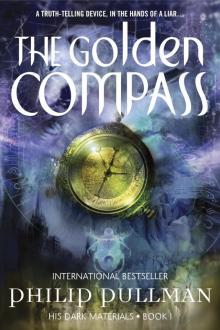 The Golden Compass
The Golden Compass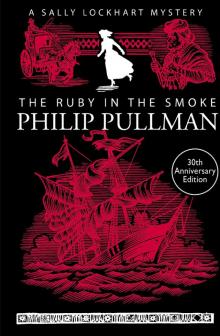 The Ruby in the Smoke
The Ruby in the Smoke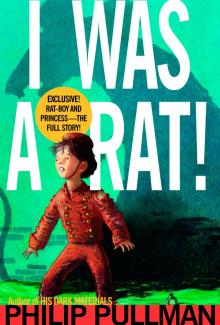 I Was a Rat!
I Was a Rat!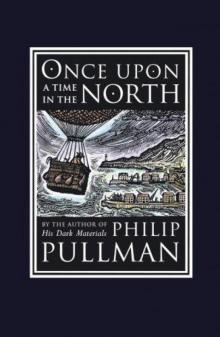 Once Upon a Time in the North
Once Upon a Time in the North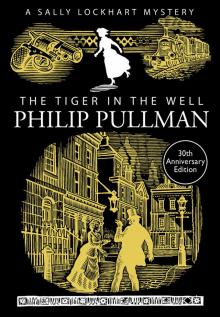 The Tiger in the Well
The Tiger in the Well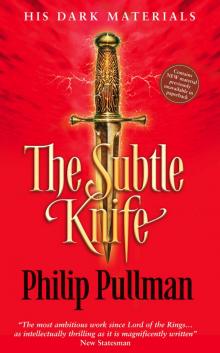 The Subtle Knife
The Subtle Knife The Butterfly Tattoo
The Butterfly Tattoo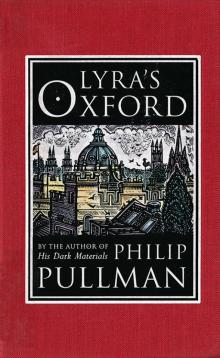 Lyra's Oxford
Lyra's Oxford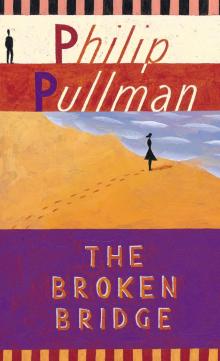 The Broken Bridge
The Broken Bridge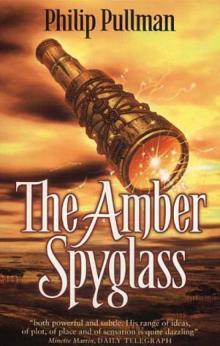 The Amber Spyglass
The Amber Spyglass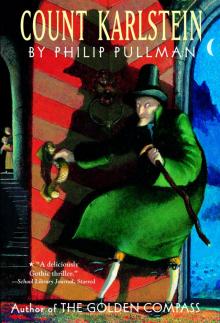 Count Karlstein
Count Karlstein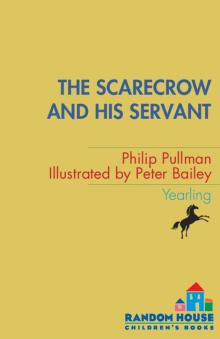 The Scarecrow and His Servant
The Scarecrow and His Servant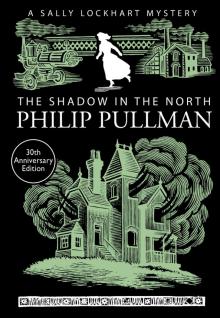 The Shadow in the North
The Shadow in the North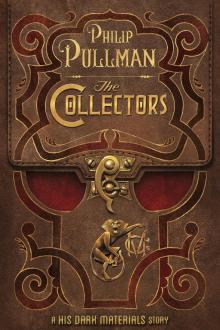 The Collectors
The Collectors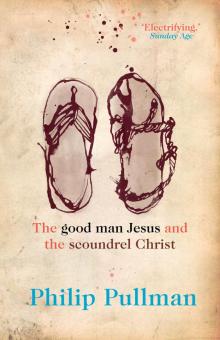 The Good Man Jesus and the Scoundrel Christ
The Good Man Jesus and the Scoundrel Christ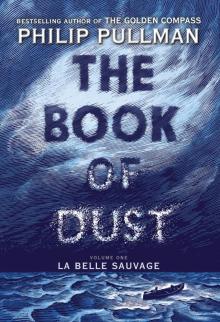 La Belle Sauvage
La Belle Sauvage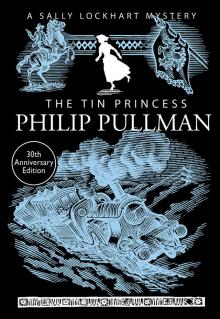 The Tin Princess
The Tin Princess The Firework-Maker's Daughter
The Firework-Maker's Daughter The Book of Dust: The Secret Commonwealth (Book of Dust, Volume 2)
The Book of Dust: The Secret Commonwealth (Book of Dust, Volume 2)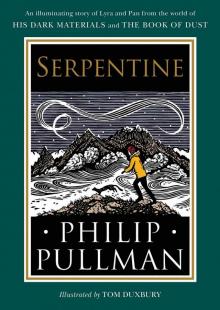 Serpentine
Serpentine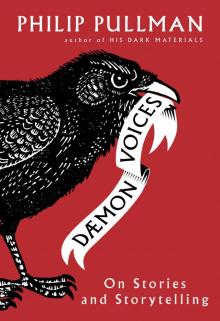 Daemon Voices
Daemon Voices The Amber Spyglass: His Dark Materials
The Amber Spyglass: His Dark Materials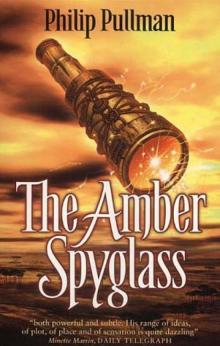 The Amber Spyglass hdm-3
The Amber Spyglass hdm-3 The Haunted Storm
The Haunted Storm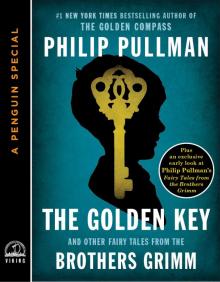 The Golden Key
The Golden Key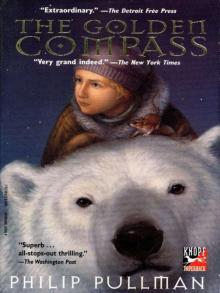 His Dark Materials 01 - The Golden Compass
His Dark Materials 01 - The Golden Compass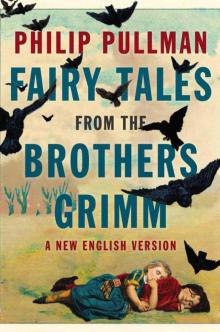 Fairy Tales from the Brothers Grimm: A New English Version
Fairy Tales from the Brothers Grimm: A New English Version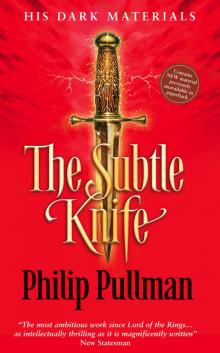 His Dark Materials 02 - The Subtle Knife
His Dark Materials 02 - The Subtle Knife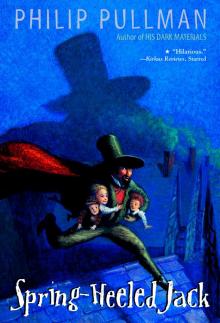 Spring-Heeled Jack
Spring-Heeled Jack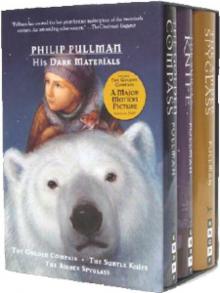 The Golden Compass hdm-1
The Golden Compass hdm-1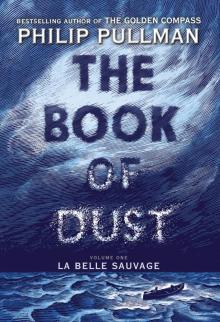 The Book of Dust, Volume 1
The Book of Dust, Volume 1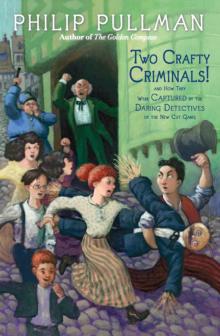 Two Crafty Criminals!
Two Crafty Criminals!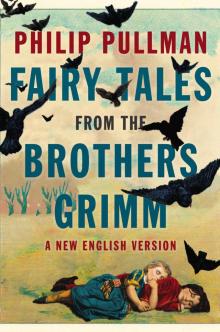 Fairy Tales from the Brothers Grimm
Fairy Tales from the Brothers Grimm The Subtle Knife: His Dark Materials
The Subtle Knife: His Dark Materials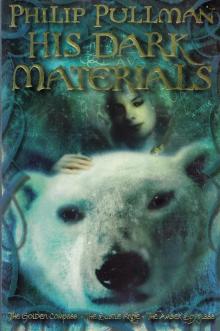 His Dark Materials Omnibus
His Dark Materials Omnibus The Golden Compass: His Dark Materials
The Golden Compass: His Dark Materials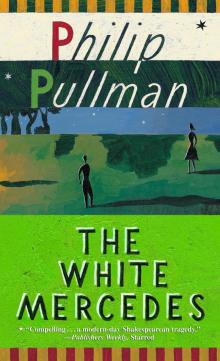 The White Mercedes
The White Mercedes